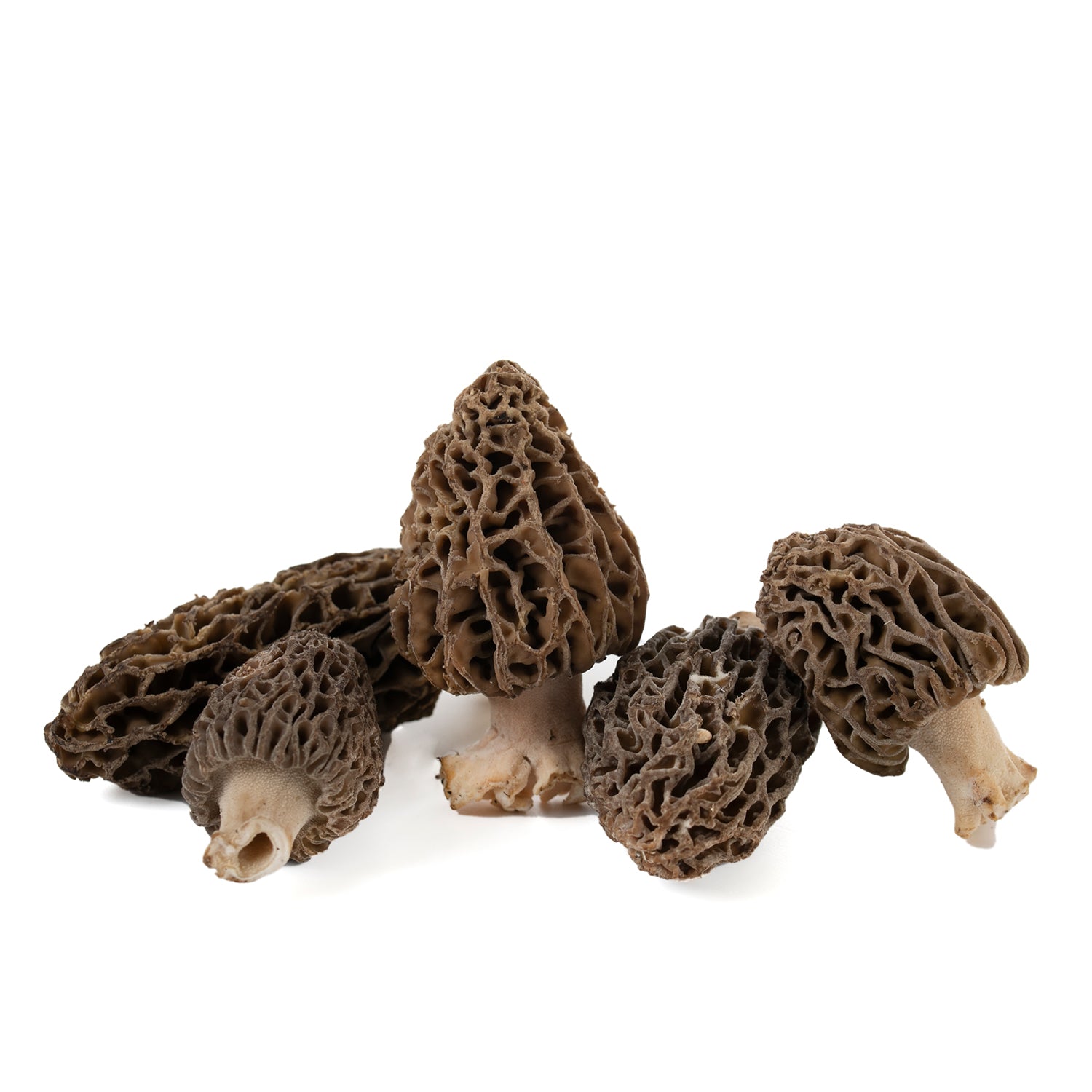
Morel - Morchella Deliciosa
Morel - Morchella Deliciosa
(Fresh Mushrooms)
Description of Morels (Morchella)
-
The currently available morel is the semi-cultivated morel of Chinese origin. Until there is no more domestic production, semi-cultured morel is the best solution to add fresh morel to your menu.
-
The first recipe publications based on morels flourish on the internet in the spring: morels with liver and egg, risotto with morels, or morels stuffed with duck.
-
We love morel season. Our favorites are the yellow ones: Morchella Deliciosa (Delicious Morel) and Morchella Esculenta (Common Morel). These are wild mushrooms that grow under old trees or in soils that have been altered by a forest fire. It may sound strange, but truffle hunters have noticed that they reproduce in greater numbers in these places. However, there is no definitive explanation for why this phenomenon occurs.
-
Its cap is often compared to a honeycomb; some even liken it to a small tree, and there are more imaginative comparisons that describe it as a little alien. The truth is that it is neither a plant nor an animal. The morel has its own kingdom.
-
The Delicious Morel has a whiter tone than the Common Morel, which is more yellow. And as it ripens, its color intensifies, while the stem is whitish and hollow.
-
The morel has a scent that evokes a blend of earth and nature, slightly sweet, especially when fresh. For some, it emits a strong mushroom odor. In taste, it has a nutty flavor and a smoky taste.
-
As for its price, it is high. But why is the morel one of the most expensive mushrooms in the world? Well, because its cultivation is very difficult and there is no guarantee that it will grow. And as we said, they sprout after forest fires. They are hollow, voluminous, and not heavy, so you have to collect a larger number to get 1 kilogram of mushrooms.
Availability and Morel Campaigns
-
They are undoubtedly the symbol of spring. Their campaign starts in February and ends in late April.
-
Before the start of the national campaign, semi-cultured morel can be found.
Quality and Portions of Morel
- Morel is available in 3 sizes: small, from 2 to 4 cm; medium, from 4 to 6 cm; and large, from 6 to 8 cm.
Origin of Morel
- The demand for morels is high, so we prospect in Spain and Eastern European countries.
Price of Morel
- The wholesale price of morels can vary from €40 to €150 per kilogram.
Our Tips for Cleaning Morels
- Check for dirt and insects in the crevices of the morels and simply brush them with a dry brush. Only if necessary, soak them in salted water for about 5 minutes, which removes the mushroom's dirt. Ideally, avoid it as it can cause excess liquid during cooking.
Storage of Morels
- Morels can be stored for 7 days from collection. The best way to enjoy them longer is to dehydrate them. This can be done using the hot air from the oven or with a dehydrating machine. Do not freeze them when fresh as they will soften.
How to Cook Morels
-
Whatever way you prepare them, the general rule for morels is: NEVER raw, always cooked.
-
The ingredients that pair best with morels are Emmental and Gorgonzola cheeses, and fresh butter. It also goes well with fresh black truffle and anything your imagination dictates.
-
So let your imagination run wild. Will it be tagliatelle with morels, morels in Périgord sauce, or a veggie pizza topped with these mushrooms?
